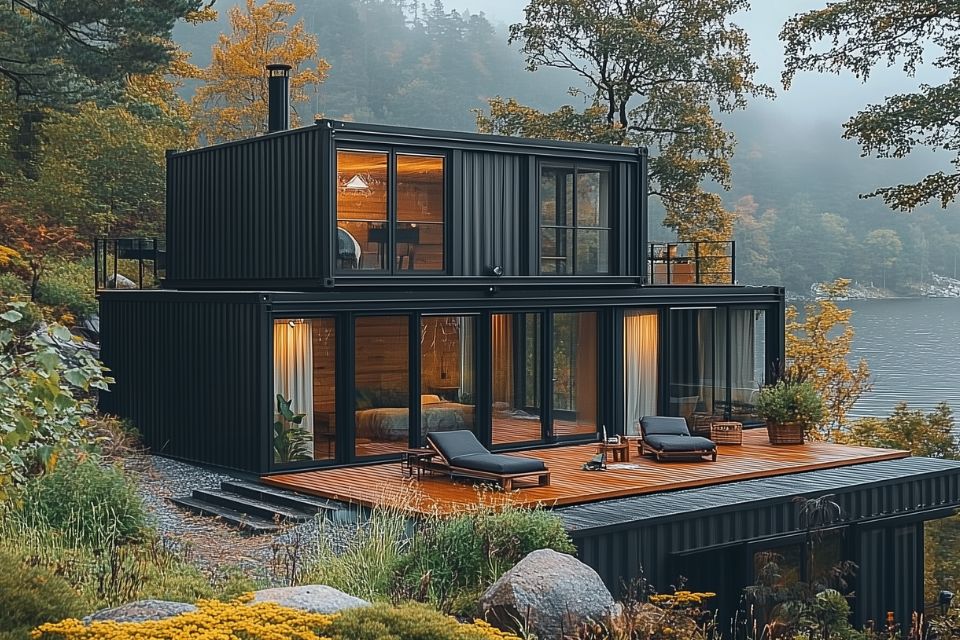Container homes are an increasingly popular choice for people looking for a unique and sustainable living option. They are essentially structures built using shipping containers, which means they come with a lot of benefits like affordability and durability.
Besides being trendy, container homes are eco-friendly and relatively quick to build compared to traditional homes.
Another name for a container home is a “shipping container home.”
This term highlights the fact that the home is constructed using the large, metal containers traditionally used for shipping goods across the world.
People often use shipping containers because they are strong, stackable, and easy to repurpose into livable spaces.
Things To Note
- Container homes are also called shipping container homes.
- They are constructed from large metal containers.
- These homes are eco-friendly and quick to build.
- Container homes are affordable and durable.
- They offer a unique and trendy living option.
Container homes are also called shipping container homes
Shipping container homes are simply container homes built using the same containers that transport goods across the globe.
These strong, metal containers make excellent building units because they can be stacked and arranged in different ways.
Repurposing shipping containers helps in reducing waste, making them environmentally friendly. When we say “shipping container home,” it immediately brings to mind the image of these robust steel boxes being transformed into stylish living spaces.
They are constructed from large metal containers
Shipping containers are typically made of Corten steel, which is a very durable material.
These containers are designed to withstand harsh weather conditions, making them an excellent choice for home construction. You can easily cut into this steel to add windows and doors, making it versatile for housing needs.
These containers can be stacked on top of each other to create multi-story homes or joined side-by-side for more spacious layouts.
These homes are eco-friendly and quick to build
One of the big advantages of using containers for homes is that they are eco-friendly. By repurposing shipping containers, we are reusing materials that would otherwise go to waste.
This helps reduce the environmental impact associated with traditional home construction, which often involves more waste and pollution.
Furthermore, building a container home is usually much quicker than constructing a conventional home. This is because the basic structure is already in place, significantly speeding up the building process.
Container homes are affordable and durable
Building a container home is generally more affordable than a traditional house. The primary cost is purchasing the shipping containers, which is relatively cheap compared to the materials needed for standard construction.
Additionally, these homes are incredibly durable. Shipping containers are designed to carry heavy loads and withstand rough conditions at sea, which means they can handle extreme weather and other stressors well when used as homes.
They offer a unique and trendy living option
Container homes have gained popularity for their unique, modern, and trendy appearance.
They can be designed in a variety of styles, from minimalist to luxurious. The flexibility in design allows homeowners to create a personalized space that reflects their taste.
Many people love the idea of turning something industrial into a cozy living space, and this trend shows no signs of slowing down.
More Information About Container Homes
One of the major attractions of container homes is their versatility. You can customize a container home to suit any lifestyle, whether it’s a small, single-container home or a large, sprawling complex made of multiple containers.
Depending on your budget and preferences, you can add insulation, solar panels, and even rooftop gardens to make your container home more comfortable and sustainable.
Another point worth mentioning is the mobility of some container homes.
While not all of them are mobile, some container homes are designed to be easily relocated, giving you the flexibility to move without losing your home.
Frequently Asked Questions
1. How long does it take to build a shipping container home?
Building a container home is usually quicker than traditional home construction. It can take anywhere from a few weeks to a few months, depending on the complexity of the design and whether you’re doing it yourself or hiring professionals.
2. Are shipping container homes safe?
Yes, shipping container homes are safe. They are made of strong steel and designed to be stackable and secure. However, it is important to properly insulate and ventilate them to ensure they are comfortable to live in.
3. Do container homes require a foundation?
Yes, like any other home, container homes require a foundation. The type of foundation may vary depending on the location and the number of containers used, but a stable foundation is essential for the home’s durability.
4. Can you finance a shipping container home?
Yes, financing options are available for shipping container homes, although they may differ from traditional home loans. Some banks and lenders are now offering mortgages specifically for alternative housing options like container homes.
5. Are container homes energy-efficient?
Container homes can be energy-efficient, especially if you incorporate features like proper insulation, energy-efficient windows, and solar panels. These additions can help regulate temperature and reduce energy costs.
Conclusion
Container homes, also known as shipping container homes, provide an innovative and eco-friendly housing solution.
They are built from sturdy metal containers, offering durability and affordability. The construction process is quicker than traditional homes, and they offer a stylish and unique living option.
Whether you’re looking for a small, single-container home or a larger, multi-container design, these homes can be customized to fit different needs and preferences.
With the right modifications, a container home can be a comfortable, sustainable, and modern living space.


